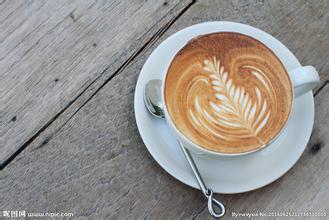Introduction to Mercedes Manor in El Salvador Coffee Manor
El Salvador is located in the north of Central America and is the most densely populated country in Central America. Honduras borders the country to the north, the Pacific Ocean to the south and Guatemala to the northwest. The national economy is dominated by agriculture, with coffee and cotton as the main crops. El Salvador is also one of the birthplaces of ancient Mayan culture, not only has a distant culture, but also has beautiful scenery such as volcanoes, plateau lakes and beaches along the Pacific coast.
The terrain here is dominated by mountains, plateaus and volcanoes. Savanna climate. Plain area belongs to tropical rain forest climate, mountain area belongs to subtropical forest climate. The annual average temperature is 25-28℃, the annual precipitation in mountainous areas is more than 1800 mm, and that in coastal areas is about 1000 mm. Abundant water resources, short river rapid flow, many volcanic lakes.
Salvadoran coffee accounts for 40 per cent of the country's exports and is picked in November and December and from January to March of the following year. Green bean exports continue almost throughout the year. Coffee is produced in seven of the country's 14 departments, with chalatenango and santa ana in the north-west the most abundant. El Salvador produces 100% Arabica coffee, 68% of which is bourbon, and bourbon coffee is usually grown at altitudes of 1062 - 1972 meters. El Salvador's unique mountainous river plateau terrain provides a suitable environment for the growth of Bourbon coffee. At the same time, El Salvador's suitable temperature and abundant rainfall and fertile soil are also indispensable natural conditions for breeding high-quality coffee beans. Salvadoran coffee is balanced, soft, and good in texture, just like other typical island beans.
Central American countries generally distinguish quality grades by altitude, such as Costa Rica, Guatemala, Mexico, Honduras and other countries. Similarly, El Salvador is classified according to altitude. At high altitudes, because of the cold climate and slow growth of coffee, the density of green beans will be higher, the hardness will be stronger, and the acid taste of Arabica will be better, and of course the quality will be better. Therefore, the higher the altitude of coffee growth, the higher the quality of flavor, on the contrary, the lower the altitude, the higher the temperature, the faster the growth rate of raw beans, the smaller the density, the lower the hardness, and the poorer the quality.
That's all for Salvatore's introduction, so let's go back to the original topic: What surprised me?
The first Salvadoran to drink was washed beans, medium-light baked, warm and mild, smooth in taste, sour and sweet mellow, and did not have too prominent flavor characteristics, so it did not leave too much impression. But the sun-treated Salvadoran flavor becomes very recognizable and stunning. After grinding, the dry aroma volatilizes a pleasant tropical fruit aroma, which is then steamed, extracted and finished, with a continuous aroma of jackfruit. As soon as the extraction is over, I can't wait to drink a mouthful. Strawberry, brown sugar, faint spice flavor, and then drink two mouthfuls. The creamy and smooth taste can be described by an advertising phrase-"Silky at the moment" haha. This country is a small producer of coffee, suitable for honey treatment and sun. On the whole, honey and sun treatments also gave El Salvador a new soul. Rhyme lasting taste rich, sour moderate, chocolate rhyme, unique tropical fruit notes, people remember deeply.
Finally, for the way this coffee is made, I personally recommend hand brewing. Hand punch can show its unique charm, in the process of grinding and extraction layer by layer to experience its rich aroma, drink up more layered feeling. It can also be extracted by siphoning, which takes on characteristics similar to those of yeggar

Important Notice :
前街咖啡 FrontStreet Coffee has moved to new addredd:
FrontStreet Coffee Address: 315,Donghua East Road,GuangZhou
Tel:020 38364473
- Prev

Lively sour Panamanian Coffee Flavor the characteristics of the producing area of the Jadeite Manor
● 's unique geographical environment Central America is a long isthmus from northern Mexico to southern Colombia, connecting North and South America. Panama is located in the southernmost part of Central America, so the country runs from east to west, not from north to south as people think. This means that the coast of the Caribbean (Atlantic) is in its north, while the Pacific is in the south. So far, Ba
- Next

Jasmine-scented Yejassefi Coffee Manor: an introduction to the flavor and taste of Cochel Manor
Most coffee beans are washed with water, but a few peas are deliberately sunburned to enhance their charming fruit aroma and mellow thickness. These mountain villages are foggy, like spring all year round, with a gentle breeze in summer, cool but not hot, rain but not damp, and no cold damage in winter, giving birth to a unique regional flavor of citrus and flowers. Most of the F trees are planted in farmers' backyards or in other fields.
Related
- Does Rose Summer choose Blue, Green or Red? Detailed explanation of Rose Summer Coffee plots and Classification in Panamanian Jade Manor
- What is the difference between the origin, producing area, processing plant, cooperative and manor of coffee beans?
- How fine does the espresso powder fit? how to grind the espresso?
- Sca coffee roasting degree color card coffee roasting degree 8 roasting color values what do you mean?
- The practice of lattes: how to make lattes at home
- Introduction to Indonesian Fine Coffee beans-- Java Coffee producing area of Indonesian Arabica Coffee
- How much will the flavor of light and medium roasted rose summer be expressed? What baking level is rose summer suitable for?
- Introduction to the characteristics of washing, sun-drying or wet-planing coffee commonly used in Mantenin, Indonesia
- Price characteristics of Arabica Coffee Bean Starbucks introduction to Manning Coffee Bean Taste producing area Variety Manor
- What is the authentic Yega flavor? What are the flavor characteristics of the really excellent Yejasuffi coffee beans?

